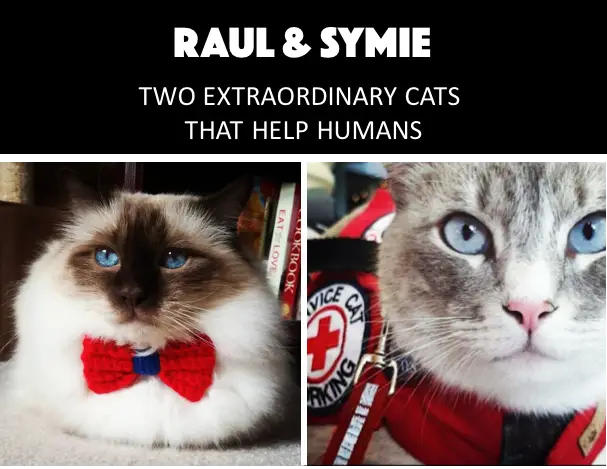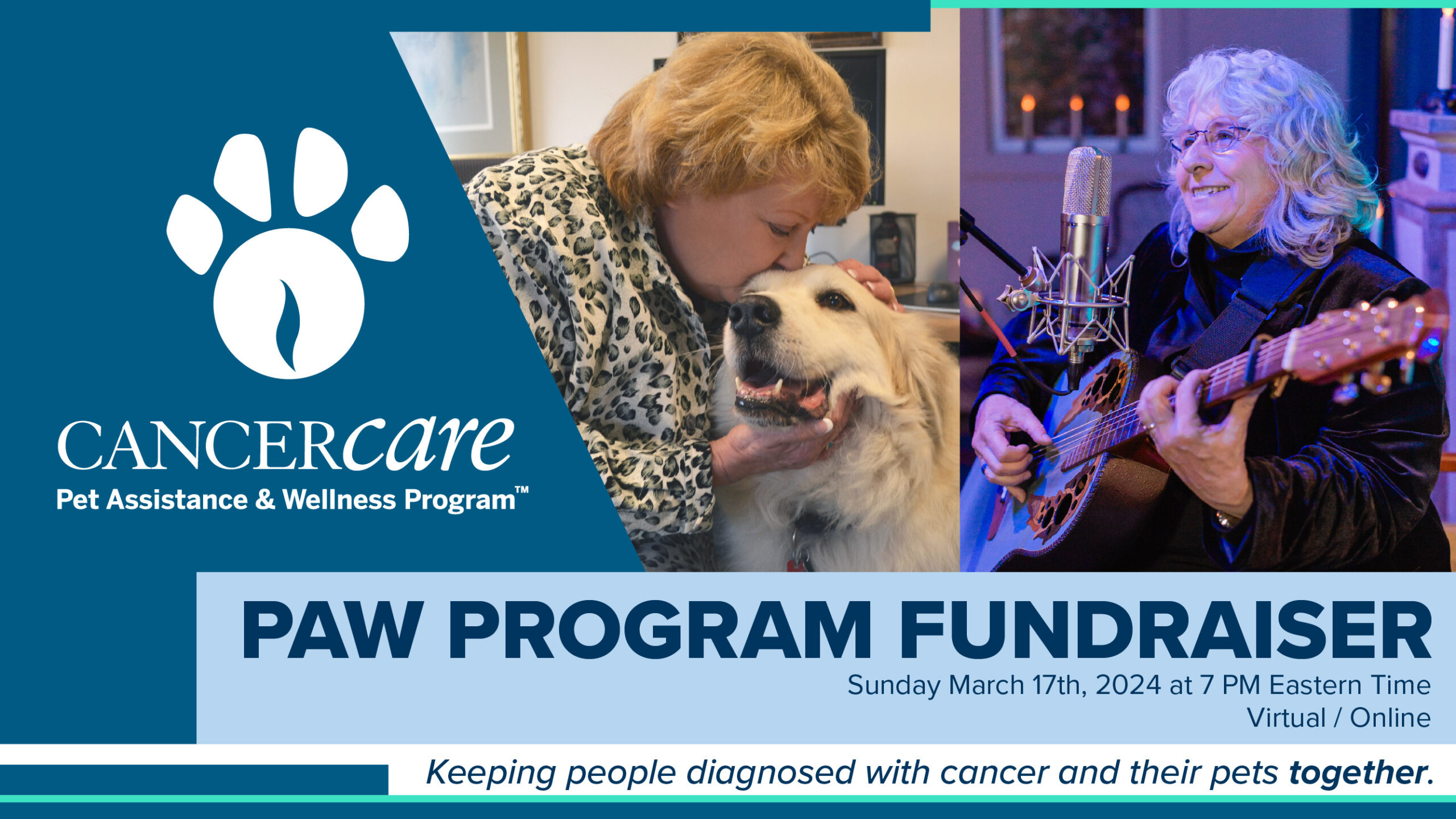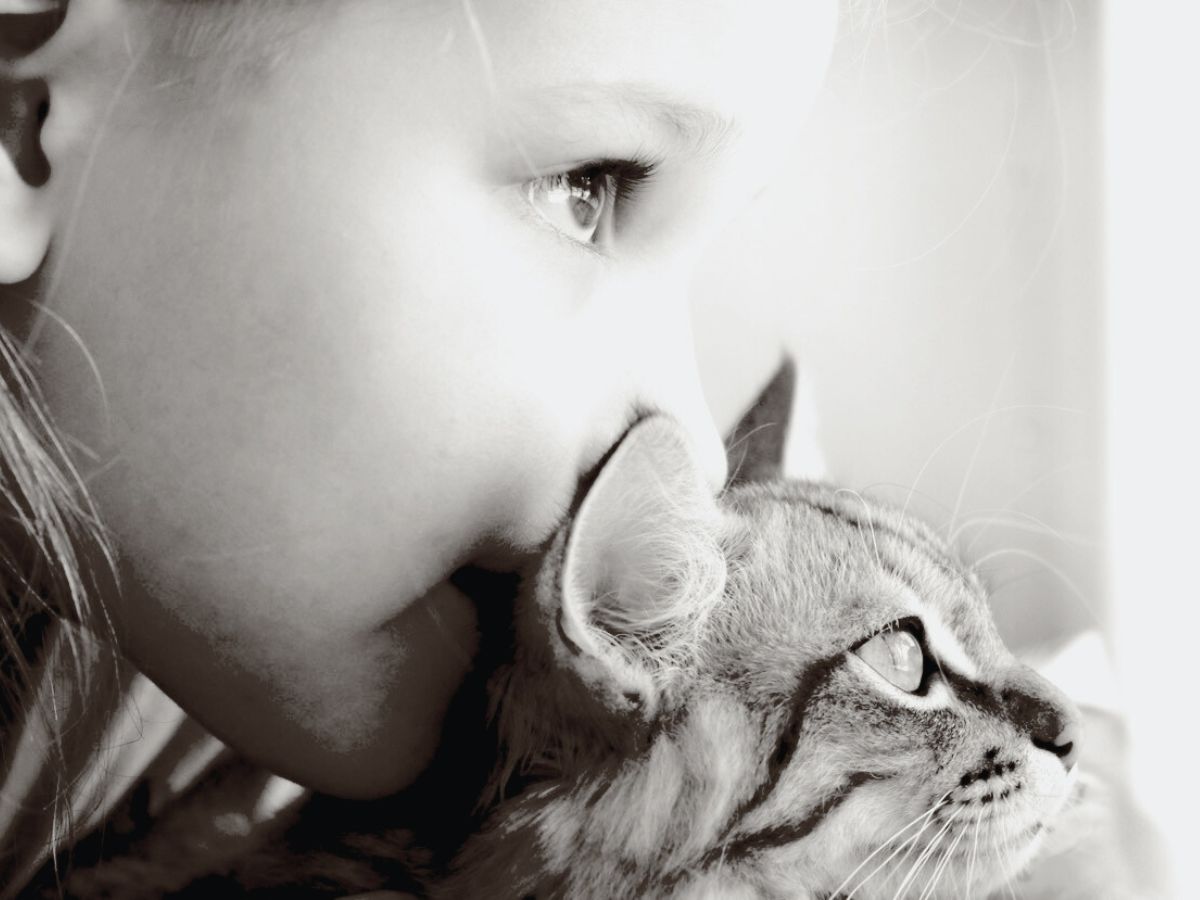We’ve all heard about how great service dogs are; loyal, highly trainable and they help their humans overcome health conditions and challenges with daily living.
But have you ever heard of a service cat?
In the last month or so, the subject has come up several times. I love all service animals, but wasn’t aware that there was such a thing as a service cat – so I investigated. Here’s what I learned. Animals – cats, dogs or whatever – that help humans with health challenges are classified in one of three ways: service animals, therapy animals and emotional support animals. In this article, you’ll be introduced to all three concepts and two extraordinary cats – one a service cat, the other a therapy cat.
Service Animals
Defined by the Americans with Disabilities Act (ADA), service animals guide the blind, alert the deaf, communicate seizure warnings, and perform other duties that help individuals with disabilities mitigate their risk. Service animals are not considered pets. They are working animals with very specialized skills and a job to do. They are trained to help individuals using their specialized training. Unlike therapy or emotional support animals, service animals are allowed anywhere their owner goes. They receive years of training to prepare them for their job.
NOTE: As of 2011, the ADA only recognizes dogs (and miniature horses) as service animals, but many states have their own laws and recognize other animals. Some State and local laws also define service animals more broadly than the ADA does. Information about such laws can be obtained from the State attorney general’s office.
Under the Fair Housing Act, housing providers are obligated to permit, as a reasonable accommodation, the use of animals that work, provide assistance, or perform tasks that benefit persons with disabilities, or provide emotional support to alleviate a symptom or effect of a disability.
Therapy Animals
Therapy animals provide support, affection and comfort to individuals in a group or public setting. You can commonly find therapy animals in hospitals, retirement homes, and schools. Therapy animal owners volunteer their time (and the cat’s time) to help others. Cats that are therapy animals, are typically very outgoing and love people. No special rights are granted to therapy animals; they are invited in when their services are desired.
Emotional Support Animals
These animals are sometimes referred to as comfort animals and they usually provide therapeutic support to those with mental illnesses. A licensed mental health professional must first prescribe the animal to the person who needs it, and deems the animal necessary for the person’s mental health. Like therapy animals, they are only allowed in areas where they are invited in with the permission of the venue owner or facility manager. They are allowed to accompany their owner on an airplane and live in housing covered by the Fair Housing Amendments Act (FHAA), regardless of a “no pets” policy.
In this three-part series, you’ll meet two amazingly special cats and their equally special owners. In part two, you’ll meet Raul the therapy cat and his owner Sarah. In part three of this series, you’ll have the pleasure of meeting Jennifer and her cat Symie the service cat, who is a fully trained and graduated Seizure and Diabetic Alert Service Cat.
Read about Symie the Service Cat.
Read about Raul the Therapy Cat.






